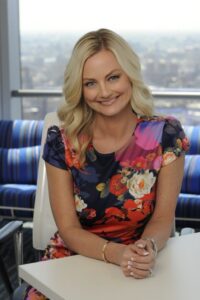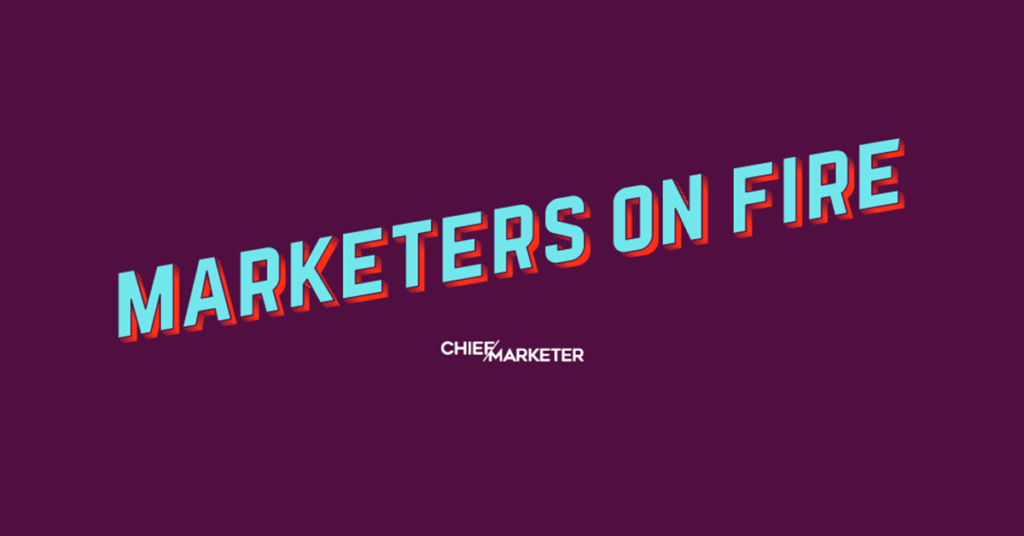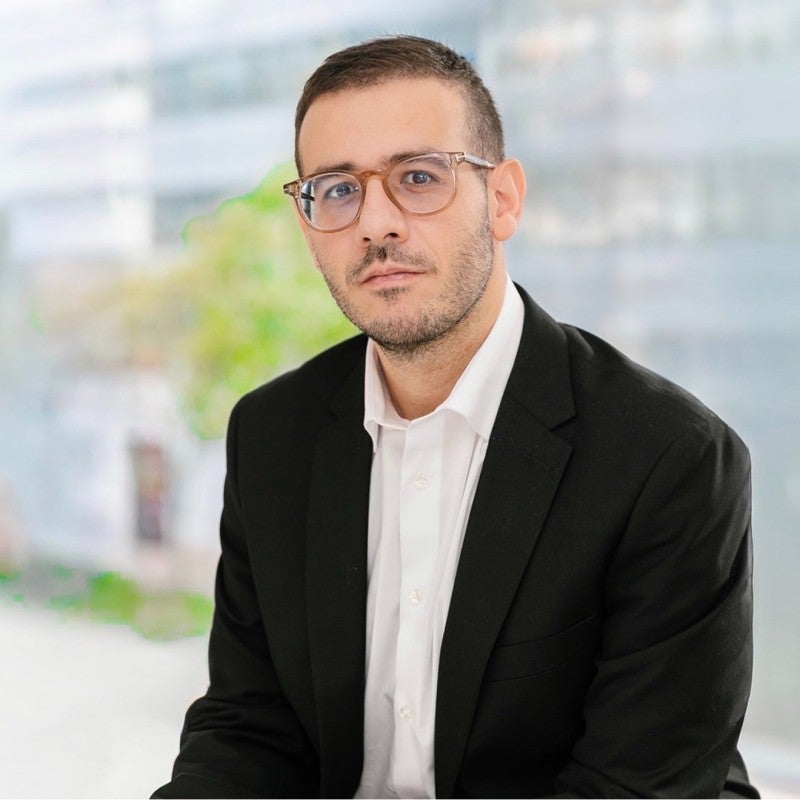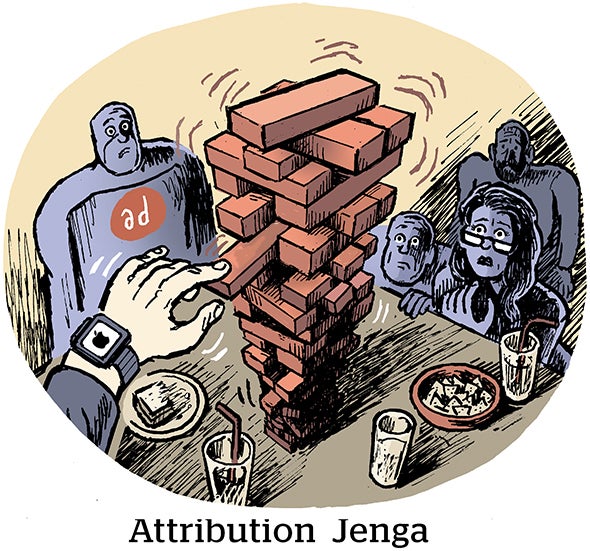Our monthly profile of an outstanding marketer whose leadership and campaigns are moving the needle for their brand.
—
Last December, SAP’s Global CMO Alicia Tillman wrote a column for Chief Marketer urging brands to be purpose-driven and for CMOs to be champions of their communities. Today, as the world grapples with an ongoing, global pandemic that’s threatened the livelihood of so many people and businesses, that call-to-action rings even more true.
Tillman took immediate steps as a result of the challenges brought on by COVID-19. In the face of global supply chain disruption and the shortage of personal protective equipment for healthcare workers, SAP opened up its Arriba Discovery network for free to help buyers and suppliers provide and gain access to critical goods. It also released a new free platform through its insights company Qualtrics, called Remote Work Pulse, to help organizations survey employee sentiment during this period of remote work.
The other major pivot related to SAP’s experiential business. With the need for communication, learning and insights at an all-time high, the brand converted its largest annual event, SAPPHIRE NOW, into a virtual one. The event garnered twice the number of registrations it hoped for, achieved five times the global reach compared to in-person events in years past, and localized SAPPHIRE NOW in 14 different markets and time zones. Following is a conversation with Tillman about how SAP has supported customers during the pandemic, her team’s approach to pivoting in-person events and the purpose-driven approach that guides her marketing strategy and vision.

Chief Marketer: What are some of the challenges SAP has faced due to the pandemic? And how has that affected the brand’s marketing?
Alicia Tillman: When we found ourselves in what was becoming a global pandemic at the end of February, immediately I began to think about how we needed to quickly prioritize the focus of the marketing team. In those immediate days, we turned our attention to understanding what was happening in the marketplace and its effect on business continuity. We found two things—and this has evolved week by week—that companies were beginning to restrict people from traveling and supply chains were starting to weaken. A very significant supply and demand issue started to escalate. SAP has technology that works in support of business travel. We also have technology that works in support of supply chain efficiency and effectiveness.
So, as marketers, we immediately began to look at our solutions and best understand what we could position and what could we open up and give access to, without charge, to help with the immediate effects this had on our customers in a short period of time. We took swift action, together with our executives and various product owners across the business, and offered free access to a lot of our travel applications, to our supply chain capabilities, to help people who needed to remain on the road and help businesses source the necessary supplies given the increasing demand.
Then, as things went on, and countries, states and companies started to shut down and in a lot of cases send people home, we realized that this work-from-home life was presenting a whole other set of challenges to companies. So, then we opened up free access to our insights applications delivered by our Qualtrics group to allow companies to get a pulse from employees and to be able to work from home productively. It was no question: We’re going to immediately stop everything that we are doing and focus primarily on getting into the hands of our customers the solutions that we offer in SAP to best help them during this period. It was all about helping and only giving them what they most needed from us at that moment.
CM: After the early days of the pandemic, how did your marketing strategy evolve?
AT: Then we began to broaden a bit, because we are a very heavily-driven company from an events perspective. We have hundreds of events that take place every month across the company from very small events to very large-scale, several-thousand-person events. We began to think about safety and health and wellness and make decisions to start canceling events. In some cases, we were canceling large-scale events that were set to happen within two weeks. With our marketers, you saw two things emerge in terms of needs during this period: You needed to get customers access—technology, certain services—and connect them to goods they needed to run their businesses. But they also needed insights. They need communication. They needed learning. [The question becomes,] how can I get closer to my employees to know how they’re feeling and my customers to know what they need? So, it was a certain level of access, but it’s information, it’s insights.
The events component of our strategy is really important because it allows for a lot of that information to be shared. We were canceling several-thousand-person events one day and completely standing up a digital platform two weeks later. Two of our lines of business, Arriba and Concur, had events with two, three, four or 5,000 people set to attend that they quickly pivoted and moved into a digital environment so that we could maintain communication with our customers. That became the other big focus of the team: How do we pivot what we’re doing into this digital environment? [Such as] our largest scale in-person event that takes place annually, SAPPHIRE NOW. That’s where the other half of the attention of the marketers went.
CM: SAPPHIRE NOW is typically a massive, in-person experiential event. What were your priorities when converting to digital? Any learnings there?
AT: The biggest opportunity that we’ve had is to deliver content that is locally relevant and locally accessible. We’ve been producing our SAPPHIRE NOW annual event for close to 15 years now. Even though we evolve a lot of the structure year after year, the reality is, it’s in a single place and it takes place over a three-day period. The majority of our attendees have come from North America because that’s where the event is hosted. We are a global company and this is our flagship event. And with digital capability, you have an opportunity to make your content more locally relevant and accessible.
If we think about how we’ve built the platform, we’re using SAP technology, but we’ve highly customized it for much of the learnings and experiences. My team has participated in dozens of online events from other companies to see what’s working, what’s not, and build an experience that we think is going to drive the levels of engagement that we expect. For example, we’ve built this platform based on 14 local instances and optimized for language and time zones. If you are based in the UK, then you will gain access to the event on a European-based platform. And if English is not your primary language, you will have access to nine different languages in which all of the content has been translated in. That is not possible with an in-person event. Sure, you can have headsets and simultaneous translation, but it’s not as seamless as we’ve been able to build it. You will watch the event in your respective time zones. We are publishing content based on convenient, accessible times and we’re delivering the content based in your local language. That’s what I get really excited about.
The other thing—and this is where you start to look at the fundamental differences—is that there is tremendous beauty in in-person interaction, and we know that it’s difficult to replace the power of conducting business face-to-face. So, one of the things that we’ve done with this platform is we have built and optimized what we believe is anything and everything that you can and should be able to access in a digital environment. We have an entire portion of our platform that is based on networking and the ability to set up meetings in a meeting room within the platform itself. You have an ability to reach out to an expert, to a pure customer in a particular industry, and request a meeting with them. And you have an ability through our live meeting platform to schedule that meeting, to go into a virtual room and have that meeting via video, peer-to-peer networking capabilities and chat with other attendees throughout the week. Does it replace our face to face? It does not. But it does still give you an ability to network and set meetings and build new connections.
CM: How has your marketing budget shifted as a result of these the challenges? How have marketing dollars moved around?
AT: There’s been two core priorities that I’ve set for the marketing team now for 2020. First, invest in capabilities and communications to make sure our customers are aware of what we can offer them related to the value proposition of SAP. How do we communicate, how do we stand up the various offers at a product level to best help them? There’s tremendous attention and prioritization being put there. Then the other half of the focus is around digitizing all of these event experiences for our customers, so that we can give them the insights and the ability to connect and network and learn through each other and with SAP, and how to help maintain continuity during this period.
The investment has gone to both of those. And then the other one, too, is a contribution at a company level. We’ve taken a decision as a company to have no layoffs. To preserve that, you need to cut in other parts of the company. So, prioritizing our focus around what truly matters the most to our customers and then focusing that for the marketing team has allowed me to reduce the overall marketing spend so that I can contribute savings to the company and not have loss of jobs.
But that means you can’t continue to do everything that you’re doing from a programmatic standpoint in marketing. It is making tough decisions, but, frankly, it’s about making the right decisions at a human level. If I can cut program spend in one area and I’m able to protect people’s jobs as a result, that’s the easiest decision in the world for me to make. The reality is that we are not working in business-as-usual times. This crisis has demanded us to focus on a few things versus multiple things throughout the year. And it’s required very swift decisioning that I took in the early part of March to re-prioritize the focus of the team and do it quickly.
CM: So, your advertising spend has decreased during this time.
AT: Absolutely. We are only focusing on those solutions that we have either changed, in terms of opening them up for free, or those that are focused on what customers need based on the challenge that the pandemic has brought. What are those most valuable solutions? That’s what we focused on from an advertising perspective.
CM: Talk about your personal approach to marketing at SAP.
AT: I lead through my values first and foremost. I place a significant importance around building and leading a marketing organization that is focused on telling the authentic story of SAP and showing how that gets delivered through the purpose orientation of how we deliver products to bring great value and benefit to our customers. I believe in people wanting to buy based on values and purpose and what can truly deliver a much higher contribution.
I’ll have been the Global CMO of SAP for nearly three years, come August 1st. When I first took the role, I did what a lot of people taking on a new senior role don’t do: I actually looked backwards. A lot of people look forward and at the journey ahead, but at the time, this was a 45-year-old brand. I spent the first few months looking back into, why SAP? What was our purpose? What did our founders set out to achieve? There were two very basic things that they set out to accomplish. The first was that they wanted to automate and integrate the way a company operates across all of its processes and systems to become more efficient and more effective.
And so that’s the technology end of it. But the theory was that if you automate the operations of a company and it enables them to run at their best, then they have a better ability to make a significant contribution to the world across economies, our society and the environment. When I read this and understood it, it had such a significant effect on me because it showed technology as an enabler to help the world become a better place. In fact, the vision of the company was, and still is today, to help the world run better and improve people’s lives. I found it to be such a powerful statement then, and an even more powerful statement today when people are looking for authenticity and truth and not to just buy from a company because of the product they sell, but partner with a company and become part of a community that’s responsible for many larger things in life. I’ve spent the last three years working to help connect what our technology helps to enable by showcasing stories of success through customers that use SAP technology.
A little fact: 77 percent of the world’s transactions are powered by SAP in some way. That’s an astonishing number when you think about the effect that we have as a brand. Nearly all of the fortune 2000 companies—98 percent of them—use SAP technology. SAP is embedded into the majority of the companies in the world on some level and that’s something I’m really proud of.
CM: How has your perspective and values guided you through this crisis?
AT: My leadership philosophy consists of a few things. Number one, I have to have a clear vision. My desire to make very swift decisions at the beginning of this pandemic is a responsibility that I take very seriously because nobody likes to operate in any period of ambiguity. And there’s not a lot of patience, even if you are working in a global pandemic. People need answers, they need direction, and they need them quickly. The other thing that I do, which I think is equally as important, is be transparent all the time.
The third point is, you have to be a very solid communicator. One of my commitments during this period, and it’s now been 14 weeks strong, is that every single week I send out a note to all of my global marketers. It’s either a written communication, a video communication, or a live communication. Even if I don’t have something new to report, I know that people want to see me. They want to hear me. They want to know what I am experiencing, so they can relate. They want direction, or they want to simply have a conversation because it’s a source of comfort for them. I’ve prided myself on being decisive, being transparent and being a very good communicator—especially during periods when people need it the most.





